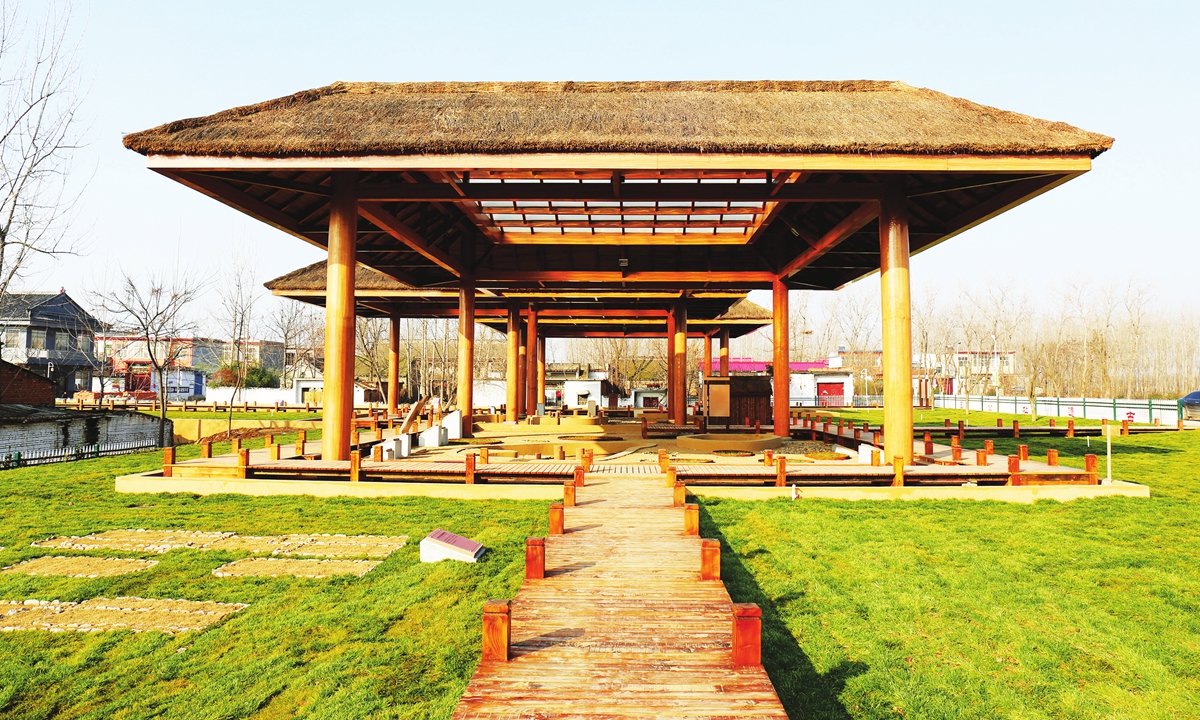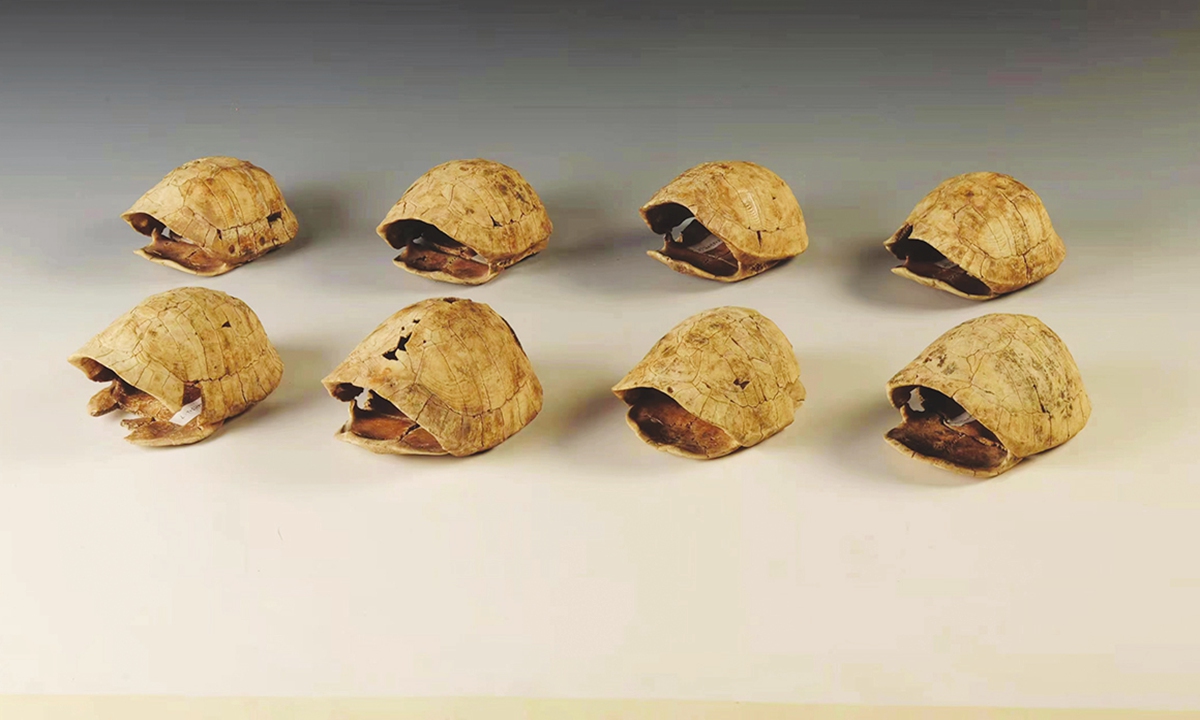ARTS / CULTURE & LEISURE
New museum on Jiahu culture seeks origins of Chinese civilization
Tracking prehistoric footprints

Jiahu Ruins Museum in Central China's HenanProvince Photo: Courtesy of Jiahu Ruins Site Management Committee

Pictogram signs found carved on tortoiseshells Photo: Courtesy of Jiahu Ruins Site Management Committee
More than 9,000 years ago, a group of people lived in a prehistoric settlement located what is today a village in Wu-yang county, Central China's Henan Province. These people were not only hunters, fishermen and artisans, but also excellent musicians who created a splendid Neolithic culture. They constructed houses, cultivated rice, domesticated livestock, made pottery wares and bone flutes, building a homeland of idyllic beauty full of the fragrance of rice and the melodious sound of music.
While their songs may no longer be heard, the relics they left behind made the Jiahu Ruins one of the 100 major Chinese national archaeological discoveries of the 20th century.
When 2023 International Museum Day is celebrated on May 18, the Jiahu Ruins Museum will open to the public, displaying the major archaeological discoveries at the site and allowing people to see the wisdom of ancient Chinese and the flourishing Chinese prehistoric civilization, Wu Yanfang, director of the management committee of the ruins, told the Global Times.
"The museum will be a window for displaying the Jiahu Ruins and interpreting the achievements of archaeological excavations and conservation efforts at the site.
"It will also be a bridge connecting the Jiahu culture with the national project for tracing the origins of Chinese civilization," Wu said.
Traveling to the past
The museum was modeled after the prehistoric settlement. The building contains cylinder-shaped exhibition halls that are connected by corridors.
When seen from above the round roofs of the exhibition halls look like raindrops hitting a puddle of water.
Wu introduced that visitors can appreciate nearly 400 cultural relics unearthed from the ruins, such as wares made from clay, stone and bone, as well as a variety of animal and plant specimens.
The wares come in all shapes and sizes with some used for cooking, planting and even fishing and hunting, covering all the Jiahu people's daily activities from growing and finding food to carrying out religious ceremonies.
Wu focused on the exhibition hall named Origin of Rites and Music, which reflects the significant status of the ruins when it comes to researching the origins of music, agriculture, writing, primitive religion and divination in China and the world.
"We have found a variety of cultural relics that show its importance, including bone flutes, carbonized rice, carved symbols and tortoise shells. A pottery ding [a ritual food vessel that stood on tripod legs and had two facing handles] and turquoise jewelry are the representative discoveries at the Jiahu Ruins," Wu said.
To bring the relics back to life, the management committee has made use of digital technology to create interactive exhibits that will provide visitors with a more immersive experience while exploring the museum.
The committee has also explored the value of cultural relics through developing cultural creative products.
These products can act as an extension to the museum that can help visitors remain close to Jiahu culture even after they return home.
Significant discoveries
The Jiahu Ruins are an important part of tracing the origins of Chinese civilization. Chen Xingcan, head of the Institute of Archaeology, Chinese Academy of Social Sciences, pointed out that the Jiahu culture is the first peak of Chinese prehistoric culture. Additionally, Wang Wei, the chief expert of the national project to trace the origins of Chinese civilization and president of the Chinese Society of Archaeology, said that the culture is an important representative of the stage of Chinese civilization from 8,000 to 5,000 years ago.
There have been eight excavations carried out in the Jiahu Ruins so far and a ninth excavation has been approved by the China National Cultural Heritage Administration. During the excavations, researchers found that the spiritual and cultural life of the Jiahu people was particularly advanced, especially when it came to rituals and music.
Fragments of 30 flutes were discovered in burials sites at the ruins. Six of these represent the earliest examples of playable musical instruments ever found, a find that has stunned the world.
The flutes were carved from the wing bone of the red-crowned crane, with five to eight holes capable of producing notes divided by neat octaves. Experts speculate that they were played during rituals.
Pictograms, signs carved on tortoiseshells, were also uncovered at the ruins. In later Chinese culture dating to around 3500 BC, shells were used as a form of divination.
They were subjected to intense heat, and the cracks that formed were read as omens. Inscriptions in Chinese characters were then carved as permanent marks on the surface of the shell. The evidence of shell pictograms may indicate that this tradition has much deeper roots than previously thought.



